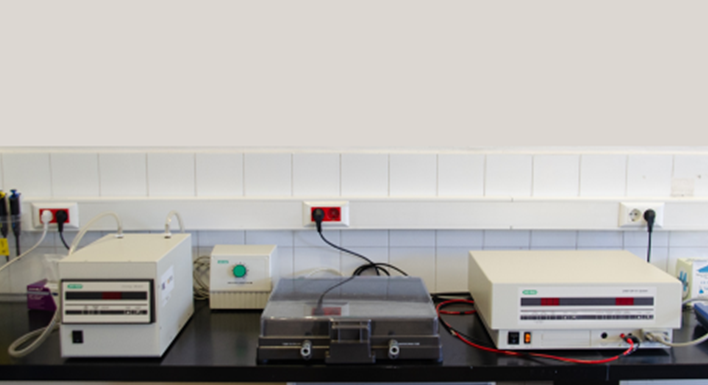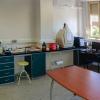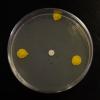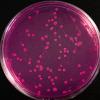- What is the IA2?
- Research and Transfer
- Services
- Press and dissemination

Food Safety Analysis and Evaluation Laboratory
Location
University of Zaragoza. Faculty of Veterinary Medicine. Zootechnics Building
Equipment
This laboratory of analysis and evaluation of food safety provides scientific-technical support to three different lines: chemical risks and biological risks conveyed by food, and nutrition and health.
In relation to the analysis and evaluation of chemical risks, it works on the detection of the presence of chemical substances in raw materials, food and feed that may compromise their safety. It mainly focuses its activity on mycotoxins (aflatoxins B1, B2, G1, G2 and M1, Ochratoxin A, Fusarium toxins), contaminants (persistent organic pollutants such as dioxins and PCBs, polycyclic aromatic hydrocarbons, heavy metals) and residues (phytosanitary/zoosanitary). For this purpose, the laboratory has the capacity to perform chromatographic (GC-MS/MS, GC-ECD, LC-DAD/FLD, LC-DAD/FLD/PHRED, LC-MS/MS) and immunological (ELISA-LFI) techniques.
Regarding the analysis and evaluation of biological risks, its activity is aimed at detecting the presence of pathogenic microorganisms in food. The laboratory has the capacity to detect agents that may represent a greater risk to safety (Listeria, Salmonella, E. coli O157:H7, Staphylococcus aureus, Toxoplasma gondii) by means of classical methods and molecular techniques. It also develops an important activity applied to validation tests of strategies for minimization or elimination of pathogenic microorganisms, detection of multiresistant microorganisms and their molecular markers, as well as in vitro techniques for isolation, identification and determination of pathogenicity. For this purpose, the laboratory has the capacity to perform microbiological and molecular techniques (RT-PCR), serological and bioassays.
In the nutrition-oriented line, it focuses on the evaluation of the nutritional and health properties of foods. The study of bioactive components (antioxidants, antimicrobials and phytochemicals), as well as the determination of the impact that technological and culinary processing has on their properties.
To carry out its activity, the laboratory is structured in different areas, with the following equipment:
Instrumental Laboratory, equipped with:
- Three Hewlett-Packard GC gas chromatographs with automatic injector, FID, ECD, NPD and MS (ion trap) detectors and PC with ChemStation software.
- One Hewlett-Packard HPLC liquid chromatograph with binary pump system with degasser, column oven, DAD, FLD and PHRED detectors and PC with ChemStation software
- Fluorescence spectrophotometer with data analysis software
- Other standard laboratory equipment
Molecular biology laboratory, equipped with:
- Laminar flow cabinet
- Gel shaker
- Vertical gel electrophoresis equipment DCODETM - Universal Mutation Detection System (genomics)
- DCODETM gel image capture
- Nanodrop™ 2000c microsample spectrophotometer. Thermo Scientific
- Mini BeadBeater. BioSpec Products
- Vacuum system and Vacuum Manifold
- Thermo Scientific MiniOpticon Real-Time PCR System. Bio Rad
- Microwell Reader for ELISA method.
- Pulsed Field Gel Electrophoresis System: CHEF-DR® III Variable Angle System + Cooling module + Variable speed pump. Bio-Rad
- Conventional electrophoresis cuvettes Mini-Sub® Cell GT Cell. Bio-Rad / Sub-Cell® Model 192 Cell. Bio-Rad
- PowerPac™ Basic Power Supply for electrophoresis. Bio-Rad
- Grant Bio PCH1 refrigerated thermoblock. Grant Instruments Ltd.
- Other standard laboratory equipment.
Food microbiology laboratory, equipped with:
- Autoclaves, laminar flow cabinet.
- Incubation ovens
- Binocular magnifying glasses and optical microscopes with attached photographic camera
- UV decontamination chamber
- UV chamber of 254 and 365 nm
- Ultrasonic bath
- Stomacher homogenizers
- Water filtration equipment with vacuum pump
- Freezers
- Other standard laboratory equipment
Laboratories for sample preparation and physicochemical analysis, equipped with:
- Gas extraction cabinets
- UV-Vis spectrophotometers
- Centrifuges
- Lateral flow immunochromatography equipment (reader and incubator)
- Gel permeation chromatography system
- TurboVap® II Evaporator. Biotage
- Vacuum system and Vacuum Manifold
- Solvent distillation equipment
- Moisture determination equipment
- Soxtec® System HT-2 fat extraction equipment.
- Freezers of -20 and -80ºC.
- Other standard laboratory equipment





